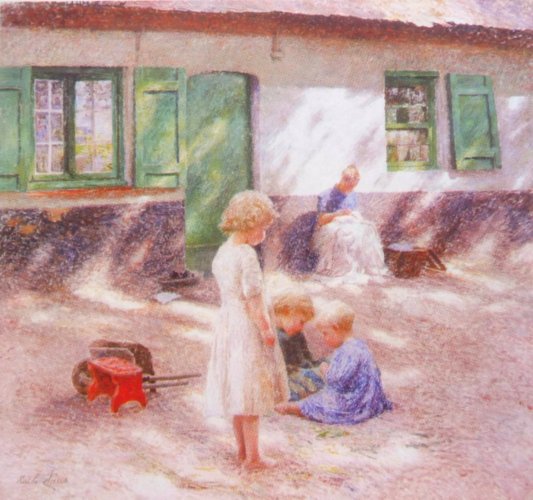Description:
Emile Claus (1849-1924) was a Belgian painter who attended a drawing course in Waeregem since he was very young. He studied at the Academy of Antwerp, which he left to pursue independent education. His creativity was influenced by his 1879 journey to Spain and Morocco, where he was amazed by the light phenomena. This influenced the colors he used. He exhibited his works in Europe for many years. He is considered one of the most outstanding representatives of Belgian Impressionism and was a co–founder of the “Vie et Lumière“ (Life and Light) group. Claus also developed his own technique based on pointillism*.
Pointillism is a painting technique that involves creating compositions by applying paint on the canvas in the form of small dots of pure colors. Depending on the distance of the viewer from the canvas.
Edward Aleksander Raczyński acquired eleven Belgian Impressionist and Post–Impressionist paintings for his collection. Landscapes were one of the collector‘s favorite motifs, so it is no surprise that he purchased pleasant canvases in a bright, sunny palette. It is also possible that the purchase was due to the previously purchased works of Podkowiński and Pankiewicz, which were in the same vein. Another possible origin of the enlargement of the collection with this group is also possible. When analyzing the collector‘s choice, it is worth paying attention to the historical situation in both Poland and Belgium. At the end of the 19th century, Poland is under partitions, while Belgium is rebuilding its statehood after recently regaining its independence. The Belgian paintings collected by Raczyński are a reflection of the restored freedom that Poles are still fighting for.
Description of the painting:
The artwork, kept in this style, is the painting “In the Shade”. This genre scene depicts the daily, slightly idealized life of the peasantry. Looking at the figures in the background, we notice a woman in a navy blue blouse, so similar to the figure in the previous painting. The foreground is occupied by playing children. The element to pay attention to is happening beyond the presented characters. The genre scene is penetrated by sunlight penetrating through the crown of a tree. Their distribution does not aim to value individual elements, but the play of light becomes the main theme, as indicated by the title of the work.


